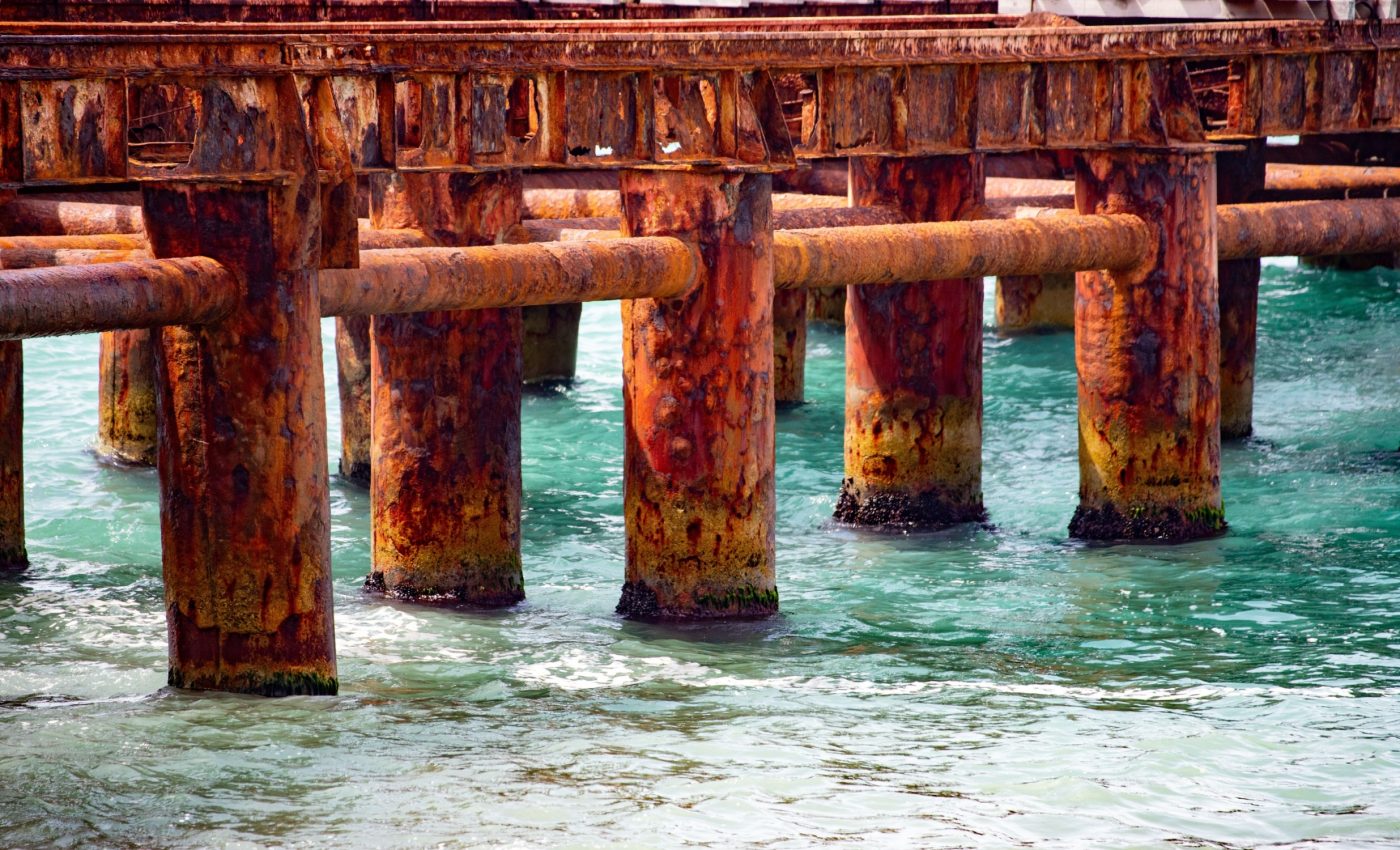
New coating makes iron almost completely rust resistant
Rust eats away at iron in bridges, ships, and garage tools. It turns strong metal into flaky, reddish-brown dust. If left unchecked, this corrosion costs the global economy around $2.5 trillion each year.
Professor Elad Gross and his team at the Hebrew University of Jerusalem have now developed a coating that sticks – and protects iron for longer.
Rust weakens iron and costs billions
When a gate creaks or a car panel bubbles, we see the surface trouble, yet industries feel the deeper sting through unplanned shutdowns and heavier designs.
Builders and ship owners pour money into maintenance crews and thicker steel plates, just to buy safety margins.
Iron anchors modern infrastructure because it is strong, workable, and cheap. Unfortunately, oxygen and moisture turn its skin into brittle oxide, exposing the fresh metal beneath.
Protective paints, zinc galvanizing, and polymer wraps slow the cycle. Even so, salt spray, ultraviolet light, and thermal swings open pinholes that let water creep in.
A single weak spot starts an electrochemical cell that accelerates decay. Inspections, sandblasting, and repainting follow, adding cost and downtime.
Old coatings don’t stick well to iron
Traditional primers hinge on sulfur‑based molecules that bond firmly to noble metals yet break down on iron. Organic polymers form thick films but rarely achieve the chemical grip needed to survive abrasion and flexing.
Ceramic layers, sol‑gels, and graphene sheets each solve one piece of the problem, yet introduce production hurdles such as high heat conditions or exotic precursors.
A 2024 review of polymer barriers called poor adhesion the main bottleneck for long service. Gross’s team approached the problem from the bottom up by giving the polymer something to hold onto.
New iron coating sticks better, lasts longer
The new recipe begins with a one‑molecule‑thick primer of N‑heterocyclic carbene (NHC), a species that bonds strongly to metals.
Crudden and coworkers showed in 2014 that NHC films on gold shrug off boiling water and strong acids far better than do thiols.
The process developed by Gross and colleagues involves electrodepositing a self‑assembled monolayer of benzNHC across the iron surface.
Next comes a spin‑coated layer of bisphenol‑A ethoxylate diacrylate that locks into a cross‑linked polymer network (CPN) under ultraviolet light.
“This discovery offers a major leap forward in protecting iron from corrosion,” said Professor Gross, the study’s senior author. He stressed that the primer’s chemistry is what keeps the overcoat anchored in place.
Salt tests show strong rust protection
Engineers test anti‑rust films in 3.5 wt % sodium chloride, a seawater mimic recommended by ASTM G44. Gross compared bare iron, iron with only CPN, iron with only NHC, and iron with the duplex system.
Bare substrates corroded fast, and the single‑layer samples offered modest relief. The NHC + CPN combo, however, slashed corrosion current by more than two orders of magnitude and shifted the corrosion potential 475 mV toward the noble side.
That translates to 99.6 % rust protection after a full day in saltwater. Importantly, the film did not blister, peel, or crack during electrochemical cycling.
Peeking inside with focused beams
The group turned to focused ion beam–scanning electron microscopy (FIB‑SEM) to expose the hidden interface, a technique valued for its precision cross‑sections. Images showed an 11.8‑micron polymer layer clinging to NHC‑primed iron, even after testing.
A control sample lacking the primer lost nearly half its polymer and displayed voids where salt had invaded.
X‑ray photoelectron and Raman spectra still carried NHC and ester signatures, confirming covalent bonding rather than weak physical contact.
New iron coating has many benefits
Shipyards schedule dry‑dock visits years ahead because a three‑day coating job costs more than a transoceanic fuel bill. Extending intervals by even one season could save operators millions.
Bridges and concrete rebar stand to gain as well. Coated bars resist chloride attack for longer, delaying cracking and spalling that demand disruptive repairs.
The primer deposits at room temperature and flows with electric field lines, so odd‑shaped parts and internal channels are within reach.
The polymer uses commercial monomers and standard UV lamps, which eases adoption on existing production lines.
Environmental gains stack on top of the economic ones. Fewer recoating cycles mean less abrasive grit, solvent fumes, and steel scrap heading to landfills.
Future upgrades could expand its uses
Gross thinks tweaking the polymer recipe could adjust flexibility, tint, or conductivity for specific sectors. Early trials hint that low‑alloy steels and cast iron accept the primer as well, though each will need its own optimization.
Future studies will probe scratch healing, antifouling additives, and accelerated weathering under UV‑ozone lamps. The team also plans to explore varied electrolyte chemistries for chemical plants.
If those efforts pan out, the humble nail might one day rival stainless steel for staying power, without the nickel price tag.
The study is published in the journal Angewandte Chemie International Edition.
—–
Like what you read? Subscribe to our newsletter for engaging articles, exclusive content, and the latest updates.
Check us out on EarthSnap, a free app brought to you by Eric Ralls and Earth.com.
—–













